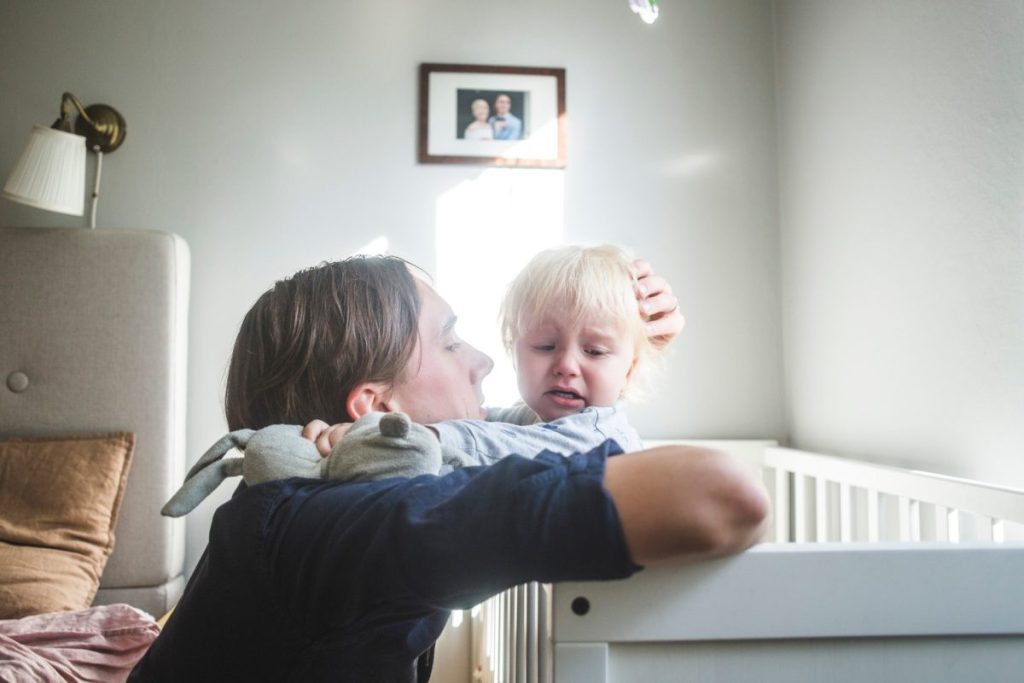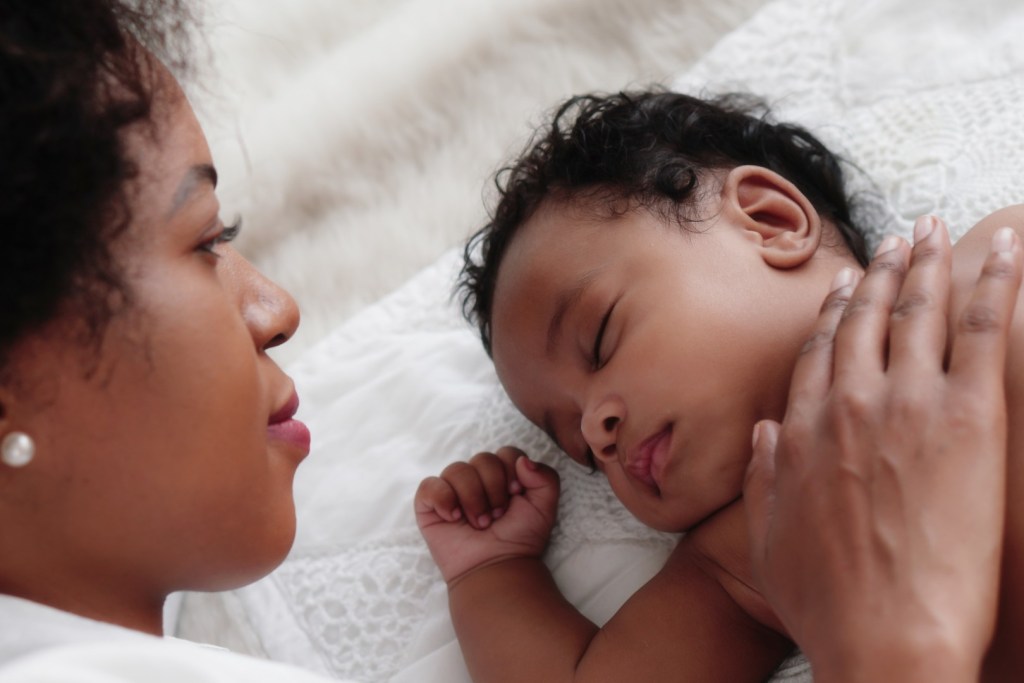
It’s heartbreaking when your little one wakes up screaming and afraid, but most young kids go through a nighttime terror phase. While scary for adults and children, it’s natural for you to wonder what causes night terrors in toddlers, and you might even scroll around online looking for tips and tricks for how to stop them.
While it’s important to consult your pediatrician about concerns, there are night terrors in toddlers remedies to try at home that will help in the meantime. These solutions may give your child (and you) relief and let everyone get a good night’s sleep.

The main reasons night terrors happen
What causes night terrors in toddlers varies from child to child. While they aren’t as common as you’d think, with only around six percent of kids having them, you never know what would set your child off having one, so it’s best to know how they happen, before they happen.
The usual suspects
- Lack of sleep
- Poor sleep/waking up too much through the night
- New environment
- Being sick
- Taking medication
- Too much sugar or having caffeine
According to the pediatric health system Nemour’s Children’s Health, certain factors tend to contribute to night terrors in kids. Children who are overtired, sick, or stressed are particularly prone to night terrors. For example, if a child is sleeping away from home (a stressor), not getting enough sleep (overtired), or taking a new medicine (such as a cold medicine if they are sick), that could bring on night terrors. Having caffeine also causes night terrors, so make sure they aren’t having anything like soda that contains this stimulant.
There is also a genetic predisposition for night terrors. About 80% of kids who have night terrors have a family member who had also experienced night terrors or sleepwalked.
Night terrors usually happen when a child moves from the deepest stage of non-REM sleep to lighter REM sleep, which is about two to three hours after falling asleep. A night terror is a fear reaction to this transition. Unlike nightmares, night terrors usually happen in the first half of the night, according to Johns Hopkins. Thankfully there are home remedies for parents to try to help prevent night terrors.

What to do to help your toddler sleep through an episode
Get enough sleep
Since being sleep deprived causes night terrors according to Mayo Clinic, giving your child an earlier bedtime and doing a sleep hygiene check-up is a good first step. Do they have a regular sleep schedule? Do they need a nap during the day?
If they are transitioning out of their nap, this may be a temporary nighttime issue that will pass as they become more rested and sleep longer at night. Just make sure their bedtime is earlier to make up for the lost naptime. Be sure their sleep area is quiet, consistent, and comfortable. Enough sleep is key.
Establish a regular bedtime routine
Toddlers sometimes are weaned from falling asleep while drinking milk or falling asleep without being cuddled as they were in infancy, and this change in routine can cause night terrors. Night terrors are often temporary, but make sure that the new bedtime routine is consistent and relaxing, no matter what it is.
Quiet activities like reading books or even breathing exercises in bed can help calm them down to get ready for restful sleep. If you don’t already have a consistent bedtime routine that is the same every night, it’s time to start.
Mitigate stress
What could be the possible stressors in your child’s life right now? Starting daycare or preschool? Parents starting new jobs or fighting? A new baby in the family? Is a grandparent or pet sick? Talk to them about what is bothering them and reassure them about whatever the issues may be. Find books about the topic and read them together, and if it is a big life change like divorce or death, consider counseling.
Keep a sleep diary
Look for patterns in which nights your child has night terrors and what happened that day. How many minutes after bedtime does the night terror happen? If it happens every night exactly two hours after bedtime, you may even want to wake them up after 90 minutes to cuddle for a bit so they don’t have the terror and then let them fall back asleep.

How to handle the night terrors
Remain calm and gently soothe them back to sleep
The best way to deal with a night terror when it happens is just to wait it out. You can cuddle if possible and talk calmly to try to soothe them. The episode will usually stop on its own. Shouting for them to stop to try to snap them out of it will only upset them. Don’t try to wake them, only try to gently soothe them back to sleep.
Prevent injury
When a child wakes with a night terror, they may be flailing and could hit objects and get hurt. Keep doors and windows closed and locked so they don’t sleepwalk away and fall. Keep electrical cords out of the way so they don’t trip. Don’t have them up on the top of the bunk bed and make sure anything fragile is far out of reach.

What not to do if your child is having a night terror
Never shake your child awake
Your first instinct might be to wake the child up to end the terror — but don’t. You could make the terror worse, scare your child more, or cause things to get more intense. Your child would also wake up confused and become even more scared if woken up during a terror.
Don’t try to hold your child down or restrain them
If you see your child shaking during a night terror, you want to hold them close or press parts of their body down so they don’t flail around. But, again, don’t. You could make sure they won’t fall onto anything that could hurt or sit there to make sure they aren’t going to injure themselves, but leave the child alone.
According to Johns Hopkins, you should contact your child’s healthcare provider if the terrors last longer than 30 minutes, if they are interrupting sleep on a regular basis, if your child does something dangerous during an episode, your child has daytime fears, other symptoms occur with the night terrors, or if you have any other concerns or questions about your child’s night terrors.
It’s scary to watch your child have a night terror the first few times, but with patience, soothing words, and a consistent bedtime routine, you will help your toddler get back to a night of restful sleep. Night terrors could start when your child is 3 years old and keep going until they are almost teenagers, so knowing night terrors in toddlers remedies as soon as possible is something every parent should do.



